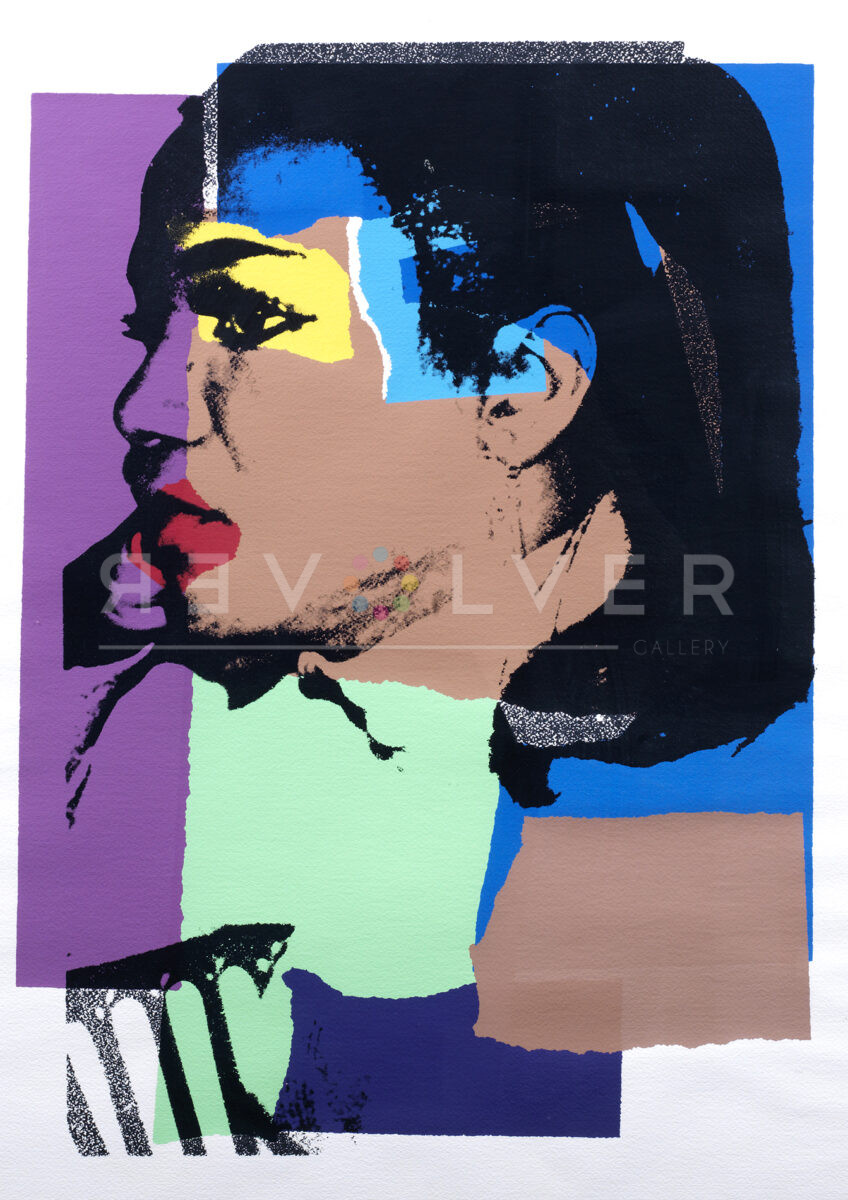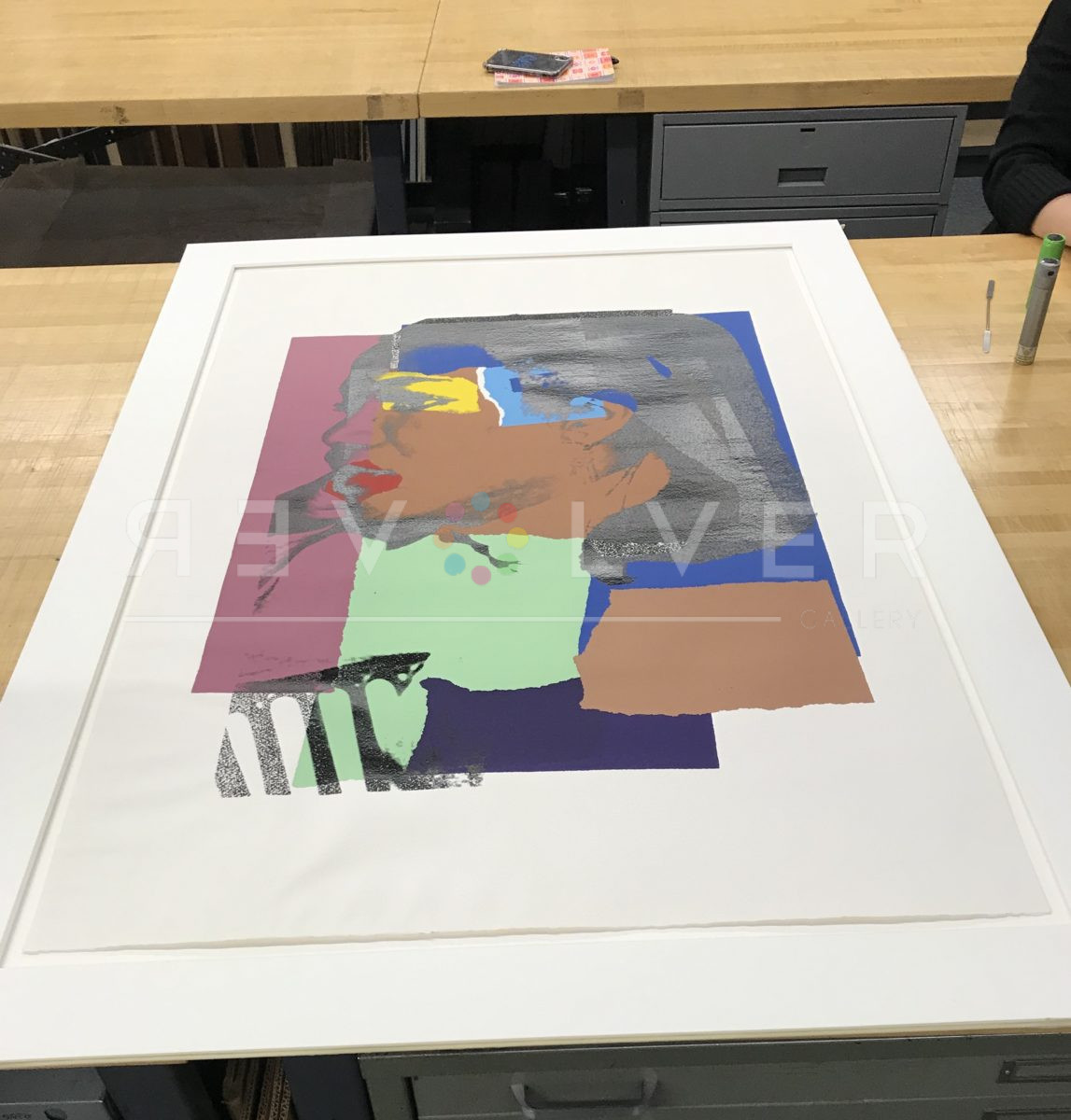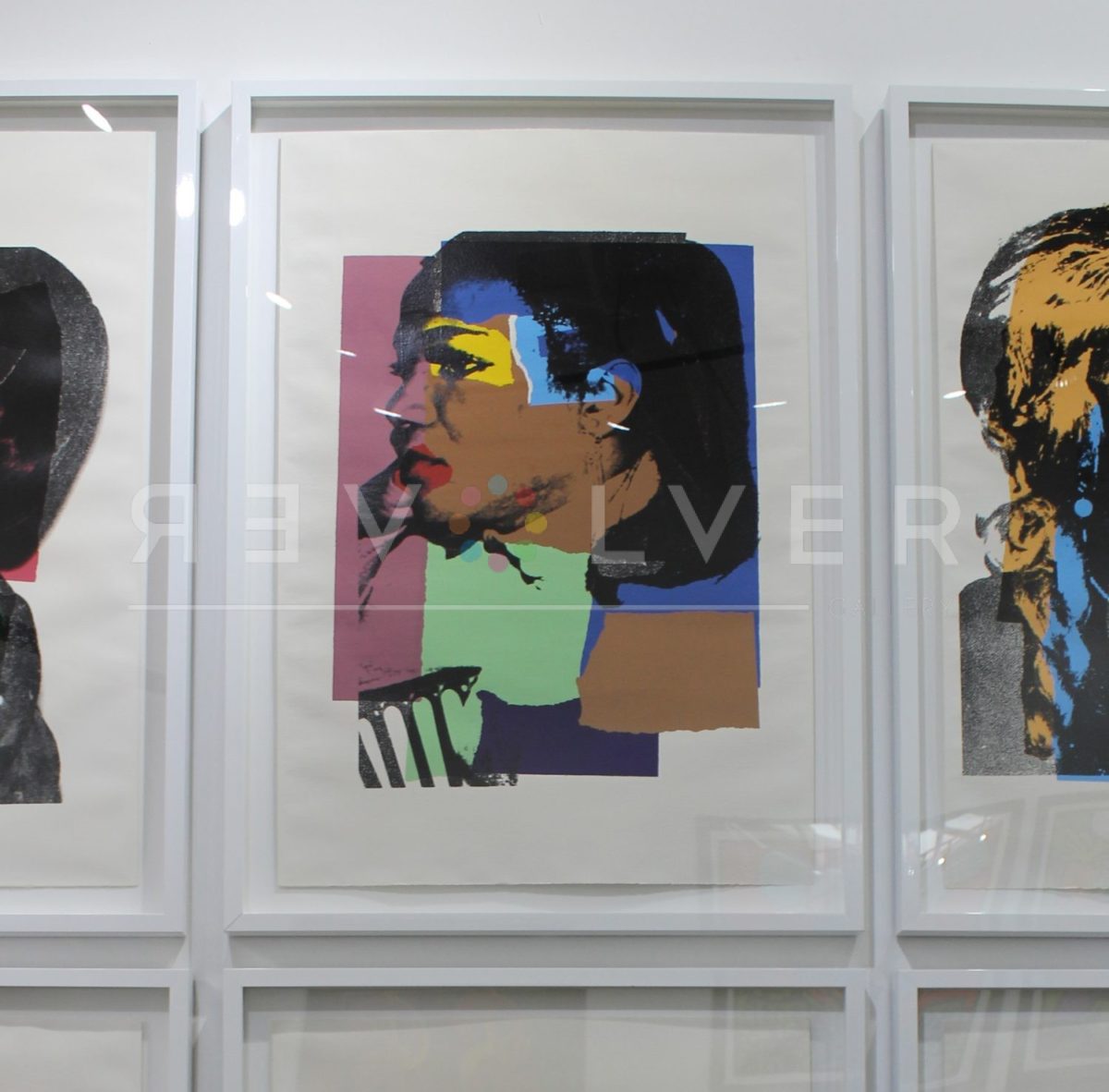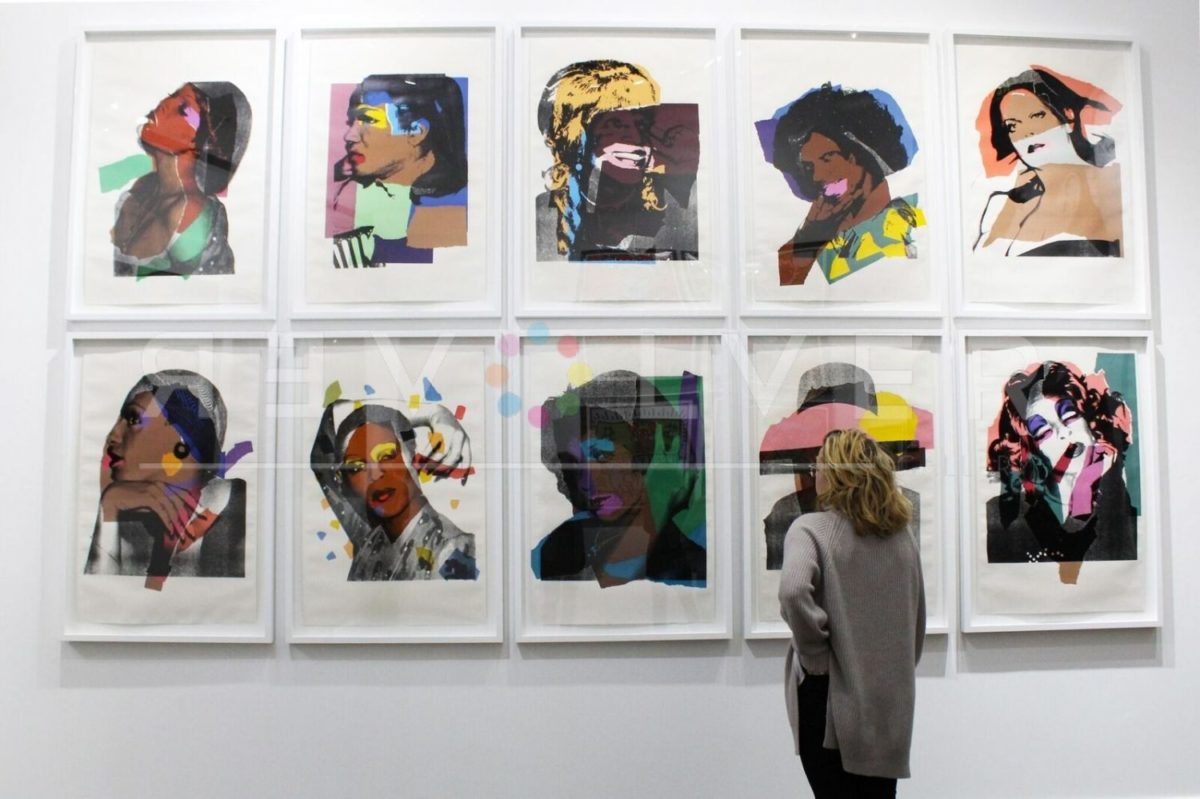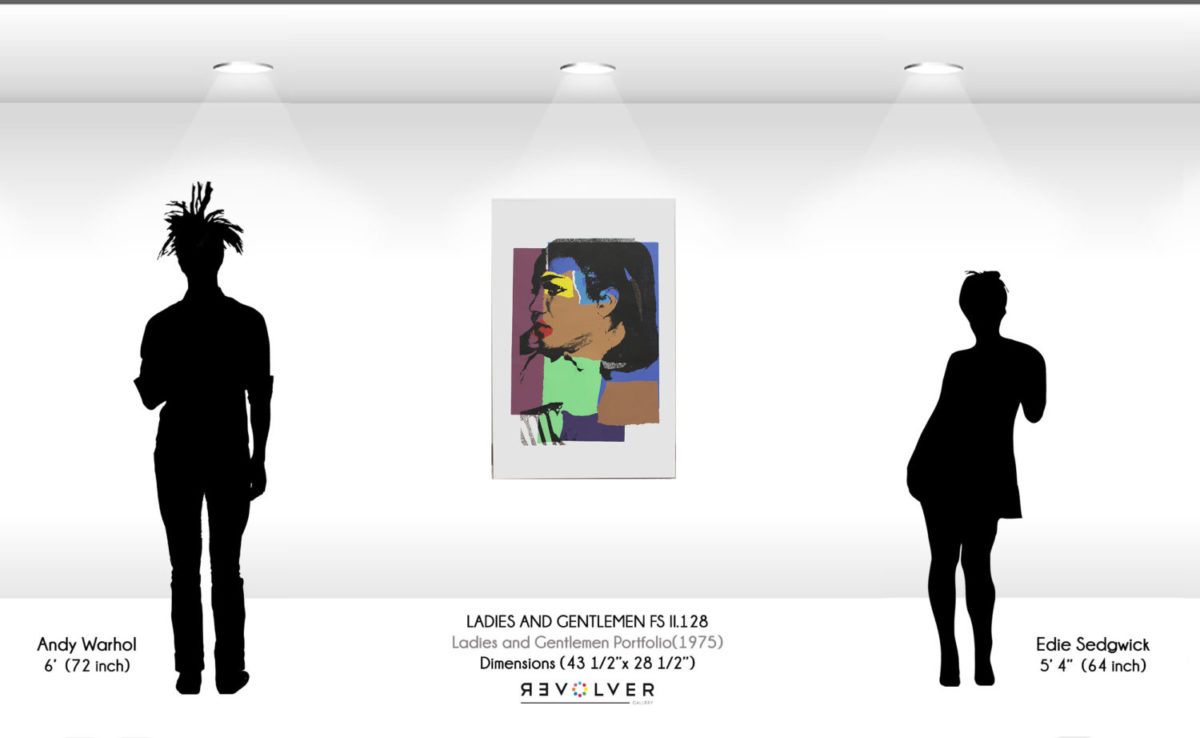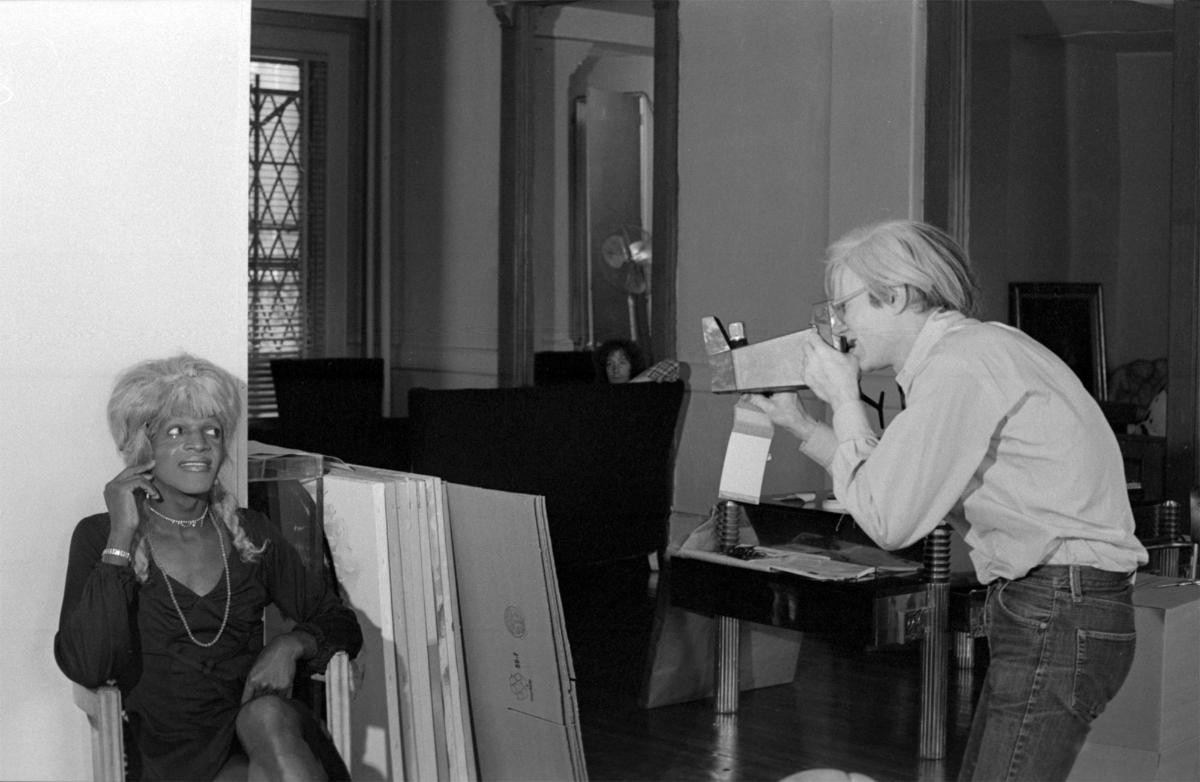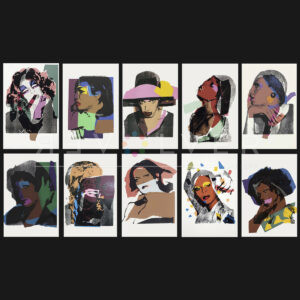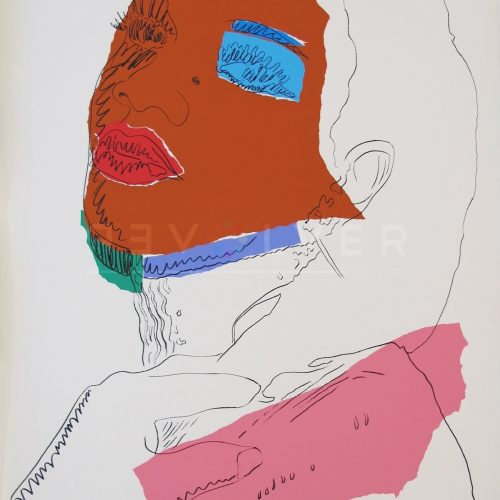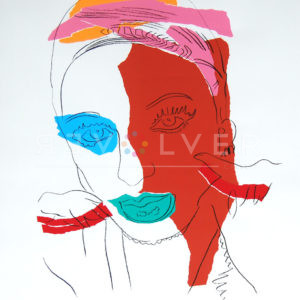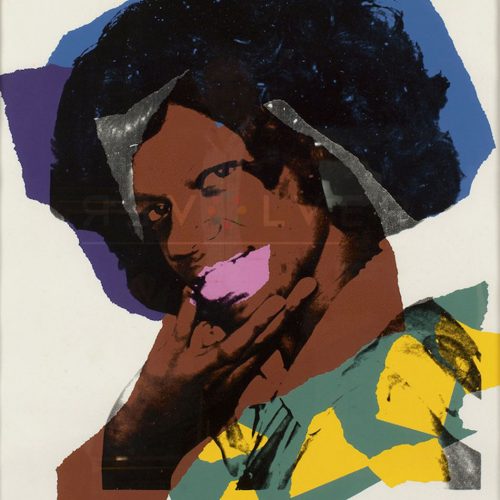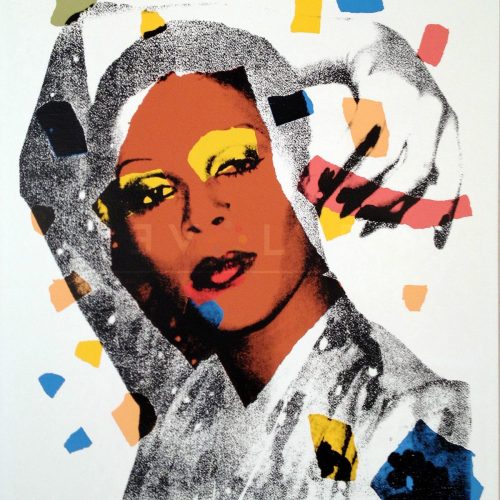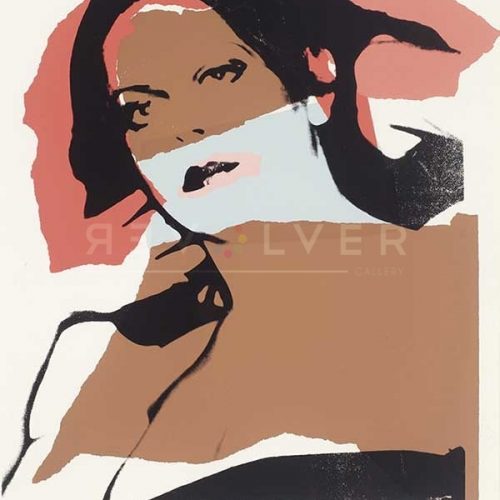Ladies and Gentlemen 129 by Andy Warhol is a screenprint from the artist’s enigmatic Ladies and Gentlemen series (1975). The portfolio is one of the first times he explores portraiture of non-famous individuals or non-commercial subject matter. Until the 1970s, Warhol predominantly featured mechanically produced subjects such as his Soup Cans, or worked with images of pop culture icons like Elvis or Liz Taylor. Ladies and Gentlemen 129, commissioned by Italian art dealer Luciano Anselmino, is thus a sort of fluke in Warhol’s career.
The subject matter of the Ladies and Gentlemen series centers on the niche population of trans folk and drag queens who frequented New York City’s Gilded Grape dive club. Specifically, many members of the Black and Latinx queer community found relief there. Warhol sent his associates Ronnie Cutrone and Bob Colacello to scout the club for models. Ladies and Gentlemen transformed Warhol into a quiet trailblazer for social equality, intentional or not. His work reflects on the socio-political issues that these ladies faced, but allowed them to show their true colors.
Ladies and Gentlemen 129 features the drag queen Alphanso Panell (only recently identified) who frequents 60 other portraits in the series of 200+ polaroids. Panell serves a side profile in Ladies and Gentlemen 129, and her large eyelashes are one of the first features to draw our attention. The inner part of her thick brow nearly connects with the thick lashes, further emphasizing their length in a way that seems to materialize her femininity. Warhol messily smudges neon yellow over the eyelids and crimson over her lips. The rest of her face is a natural light brown skin tone, with blocks of pastel purple and sky blue along its edges. Details like these make Ladies and Gentlemen 129 remind the viewer of works such as Muhammad Ali 179, or Sachiko 154.
Panell’s jet black hair is done up in a slicked back bob that defines the angularity of her jawbone as it curls along the same angle at her neck. Like Ladies and Gentlemen 136, which also exhibits a side profile, Warhol works with directionality to allow her femininity to shine; long eyelashes, makeup, and done-up hair all slightly contrast her biologically masculine anatomy, which becomes less recognizable in side-profile.
Warhol used his Polaroid camera to take the portraits before screenprinting them and adding his artistic license. Ladies and Gentlemen is crafty because Warhol manages to elicit false perceptions of the queens, which his Polaroids or their lifestyle would otherwise suggest. Throughout the series, Warhol’s models ooze a sensuality and glamour that reflects sinuous confidence. Bright colors and abstraction further promote this illusion. Warhol edits out their vulnerabilities and flaws though, similar to influencers editing social media posts.
In Ladies and Gentlemen 129, yellow and sky blue enliven the model’s eyes, giving her a sunny hue. However, this brightness takes the place of the dark circles that would typically fall there, especially after enjoying nights out at dive clubs like The Gilded Grape. What could also be lost in Warhol’s adaptation of this queen is the emotional pain that comes with social unacceptance, or the profound black market activity that may have afflicted her and many of the models.
Around this same time, Warhol created his Mick Jagger portfolio. The starpower of Mick Jagger far surpassed the models in Ladies and Gentlemen, but both subjects, famous or not, received a similar artistic license and fair treatment by Warhol. Warhol depicted these women—who ostensibly came from a different walk of life than the british rockstar—with the same respect and glamour reserved in the past for those more socially respected. In doing so, his art was a stepping stone for their social inclusivity and acceptance. By featuring a glimpse of the queer community in his art, Warhol allowed them a spotlight outside the realms of New York underworlds like the Gilded Grape. Ultimately, Ladies and Gentlemen 129 is a classic, yet highly unique, piece of Warhol’s legacy.

